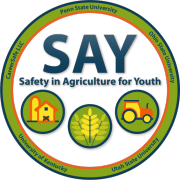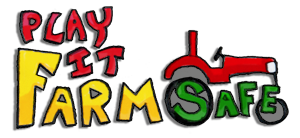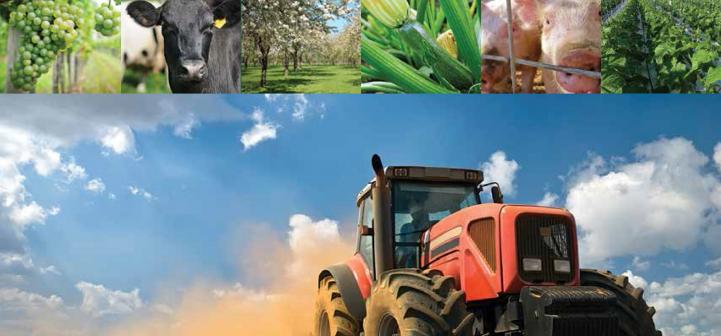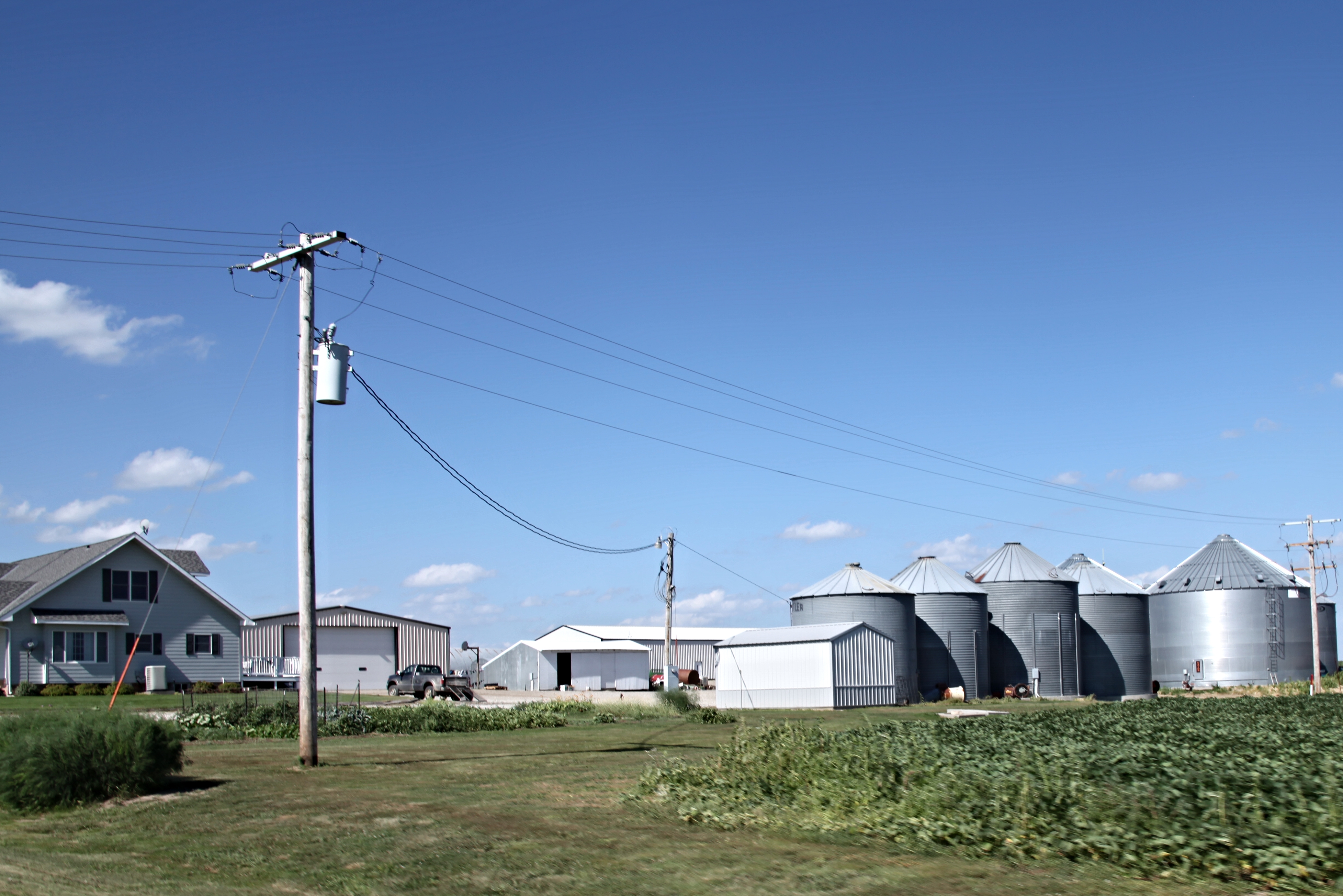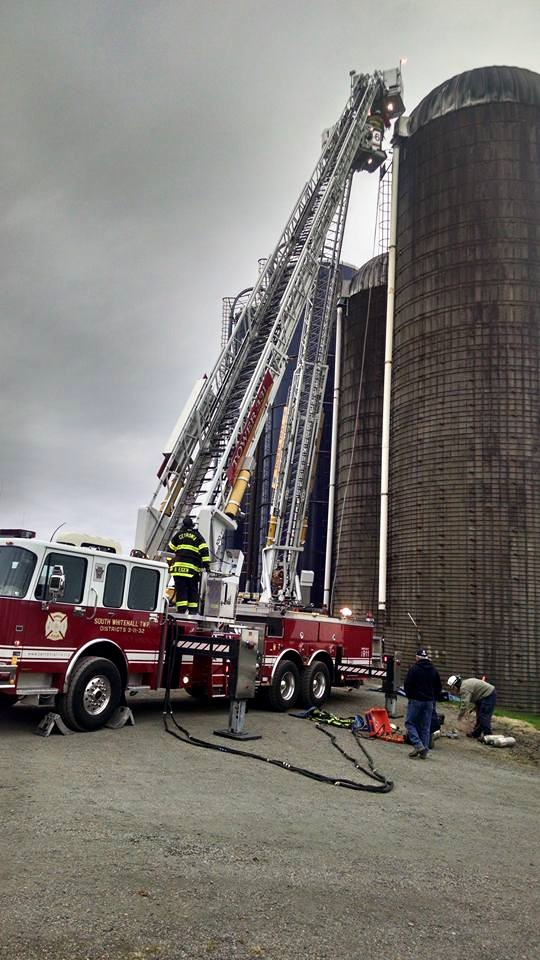
Photos provided by the Central States Center for Agricultural Safety and Health (CS-CASH)
Lightning and thunderstorms typically occur during the spring and summer months. As human beings, we are great conductors of lightning because approximately 65 percent of the human body consists of salt and water. Lightning can cause injury or death to humans and animals, either by direct strike or transmission indirectly to and through the body. Also, it can cause structure fires.
Cloud-to-ground lightning can cause injuries by direct or indirect means because the current can branch off to a person from a nearby tree, fence, or other tall object. Lightning flashes can send a current through the ground to a person after hitting a nearby object, such as a tree. Additionally, injuries or death can occur due to fires or falling objects caused by a lightning strike.
Awareness and Preparation
National Oceanic and Atmospheric Administration (NOAA) Weather Radio and local radio/television stations are the best sources for the latest forecasts and emergency updates in your area. Remember that a thunderstorm watch means that storms are possible whereas a thunderstorm warning means that severe weather has been reported by spotters or radar in your area. Even though it is not possible to have lightning without thunder, there are times when you cannot distinctively hear the thunder. When this happens, typically during the summer months, the lightning you see is called heat lightning. The term dry lightning refers to lightning that occurs without rain. This type of lightning can cause forest fires.
In preparation for thunder and lightning storms, you and your family should take the following actions:
- Choose a place in the house where family members will meet in the event of a storm.
- Make a list of specific items that need to be brought inside during a storm.
- Keep trees and shrubbery trimmed and remove debris from around buildings to reduce the potential that items (for example, weak tree limbs) will become projectiles.
- Ensure that you have a place where your animals can go to be protected.
- Consider installing permanent shutters that can be closed easily and quickly for better protection.
- Install lightning rods on your home, barn, and other structures that house animals. Also, install a lightning arrestor or diverter on any electric fence.
When and Where to Seek Shelter
The National Weather Service recommends using the 30/30 rule to know when to move to safety and when to return to your activities. If lightning is within six miles, locate a safe place and stay there until no lightning has been seen nor thunder heard for 30 minutes. The “flash to bang” count can determine the distance of the lightning. When you see lightning, start counting seconds (one one-thousand, two one-thousand, and so on) and stop when you hear the thunder. Every five seconds equals a mile, so move to safety if the count is less than 30 seconds.
Choose your safe place wisely. A fully enclosed metal vehicle or building is a safe shelter if the outer metal shield is not compromised. This means you should keep windows closed; avoid objects that penetrate from the outside to the inside; and in a vehicle, do not touch external objects such as door handles or radio knobs. In a lightning storm, avoid water, high and open ground, metal spaces, canopies, picnic or rain shelters, trees, and electrical/electronic equipment. If you are in a structure that has curtains or blinds over windows, close them to prevent glass shards from flying into the structure from a broken window.
If you cannot find a safe shelter, place yourself as low as possible to the ground without lying on the ground. Seek low ground, such as a ditch, or crouch down with your feet together and your hands over your ears to protect your hearing.
During a lightning storm, take the following precautions:
- Do not hold anything that can conduct electricity, such as a shovel, a hoe, or a golf club.
- Do not operate farm equipment.
- Avoid water! Do not take a bath or a shower or run water for any purpose (for example, to wash dishes). If you are swimming or boating, get out of the water.
- Protect your electronics and electrical items from lightning strikes and power surges by unplugging televisions, computers, and other valuable appliances.
- Avoid electric fences, clotheslines, metal pipes, rails, telephone poles, and other conductors.
Fires and Entrapments due to Lightning
An electrical fire can occur when an appliance or a tool catches on fire. If possible, unplug the appliance from the outlet; however, if doing so places you in danger, turn off the current at the fuse box. Use an ABC or BC fire extinguisher on an electrical fire, and remember never to pour water on an electrical fire. Leave the area, and contact your local fire department if the fire is more serious than a simple appliance fire. If you notice fallen electrical wires, report them immediately to the police or local utility company. If you find someone trapped in a vehicle by fallen wires, tell the person to stay in the vehicle without touching any metal parts of the car while you go for help.
Injury Types and First Aid
Most lightning strike victims survive, but common injuries include burns, broken bones, heart attacks, and neurological damage. Short-term effects of lightning strike include memory loss, chronic headaches, ringing in the ears, fatigue, personality changes, muscle spasms, joint stiffness, numbness, sleep difficulties, and dizziness. Additional injuries can be caused by fires or objects that fall after being struck by lightning.
First aid needs to be started immediately after a lightning strike. If the person is conscious, check his or her breathing and pulse. If there is no pulse, begin cardiopulmonary resuscitation (CPR). Check the victim for additional injuries, such as fractures, but do not move the person if you suspect a spinal injury. If the victim sustained an electrical burn, cover the burned area with a dry, sterile dressing. Remember to look for multiple burn areas because separate burned areas may exist where the current entered and exited the victim’s body. Also look for burned areas on the person’s extremities (fingers and toes) and on areas next to buckles or jewelry. Contact your local emergency responders. Even if a person does not appear to be injured, he or she still should be seen by a medical professional.
Resources
Click here for more information about personal lightning safety from the National Lightning Safety Institute.
Click here for more information about NOAA Weather Radio.
Click here for information about lightning safety for outdoor workers from the National Lightning Safety Institute.
Click the link below for more detailed information about the related topic.
Sources
Cyr, D. and Johnson, S. (2003) Lightning safety. University of Maine Cooperative Extension. Retrieved from http://umaine.edu/publications/2315e/.
Kithil, R. (n.d.) Decision tree for personal lightning safety. National Lightning Safety Institute. Retrieved from http://www.lightningsafety.com/nlsi_pls/decision_tree_people.html.
Thunderstorm safety. (n.d.) American Red Cross. Retrieved from http://www.redcross.org/prepare/disaster/thunderstorm.
Thunderstorm safety checklist. (2009) American Red Cross. Retrieved from https://www.redcross.org/get-help/how-to-prepare-for-emergencies/types-o….

